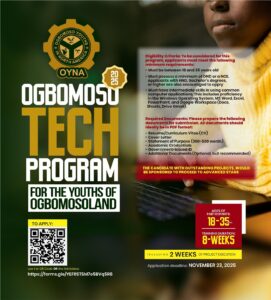
By Lynn Nygaard and Kristin Solli
A PhD by publication, that is, a PhD submitted in the form of a dossier of published papers with varying degrees of connective writing, has become an increasingly common thesis format. However, as Lynn P. Nygaard and Kristin Solli point out, there are significant variations in how these pieces are put together. Outlining these differences and providing a checklist, they show the key questions students should ask when looking to undertake this kind of PhD.
The PhD by publication is becoming an increasingly popular choice in the social sciences, especially in Australia, New Zealand, South Africa, and Scandinavia, but also in other countries. This kind of thesis is no longer “new” in the places where it has taken hold, yet it remains an unsettled genre with striking variations across geographical regions, disciplines, and institutions. For example, there is no agreement on what to call it (thesis by publication? article-based thesis? compilation thesis? something else?) – let alone on what it should look like. Institutional guidelines that explain to the doctoral candidates (as well as those supervising or evaluating the thesis) are not always easy to find. If you feel like you are left on your own to figure it out, you are not alone. Investigating “what is expected of me?” will always be time well spent. But first you need to know what questions to ask.
Sandwich or two-part model?
A PhD by publication consists of a series of standalone articles plus some sort of narrative (also called a synthesis, integrative chapter, or many, many other things). But it is not always obvious how these two parts fit together. For example, in the “sandwich model”, which is common in Australia and New Zealand, the articles are treated like chapters and are “sandwiched” between two narrative chapters (normally an introduction and a conclusion) that attempt to tie the various threads together. Considerable effort is made by doctoral candidates to ensure flow between the chapters (including perhaps adding additional narrative text between the article chapters) so that it reads like a book (that is, a traditional monograph). This model is perhaps more attractive in contexts where there is still a certain amount of skepticism to the PhD by publication.
In Scandinavia, where the “article-based thesis” is the default format in most social science contexts, we use a two-part model. Here, the narrative is separate from the articles, and written with its own beginning, middle, and end. The articles themselves appear as a distinct second part of the thesis – similar to appendices in the sense that they are separate both from the first part and from each other. While the candidate must demonstrate strong thematic connections between the articles, there is no expectation that the text itself should read as a coherent whole.
What kinds of articles?
The publications are the backbone of the thesis by publication, and there are huge differences between institutions when it comes to what constitutes a “publication” and how many are required. The key idea is that the publication should be aimed at academics (who are not on your committee). This naturally rules out blogposts and coursework (so, no, you cannot submit the literature review you produced in one of your classes unless you have reworked it completely to be ready for submission to a journal). Journal articles are the gold standard here, but book chapters and conference proceedings are also permissible in some contexts.
But how many do you need? Do they all have to be published? Are co-authored articles acceptable? What happens if an article gets rejected? These are all reasonable questions, and the answers to these questions depend very much on where you are located.
In Scandinavia, three solo-authored articles can be considered a basic point of departure. If you include co-authored papers (whether they are co-authored with a supervisor or someone else), then sometimes more papers are expected, or there are restrictions on the number of co-authors.
In many places, there is an expectation that most (and sometimes all) papers need to be published before thesis submission. In other contexts, it is common for only one (or even none) to be published or accepted for publication. Instead, the papers must be deemed “publishable” as judged by your supervisor or PhD program. In effect, it is possible in some places to submit a thesis by publication without any published papers. When the emphasis is on “of publishable quality” and not the status of being published, a rejection by a journal is of little consequence because the paper will simply be classified as “not yet published”.
Expectations for the narrative?
Apart from the basic distinction between the sandwich model and the two-part model, there are huge local variations in what is expected for the narrative. In some departments, we have noticed a move towards minimalism, where the articles are supposed to speak for themselves, and the narrative is becoming shorter and shorter, (5000-7000 words in some PhD programs in Economics for example). On average, however, about 20,000-25,000 words seems to be expected.
Sometimes, the narrative is little more than a cover letter that summarises the articles. In our work, we argue that the narrative should go beyond summarising your articles and draw out the main themes at a higher level of abstraction, aiming to make the whole greater than the sum of its parts. This is because the narrative serves to demonstrate various aspects of your “doctorateness” that may not be visible in the articles written for an audience that is not interested in your candidacy. It allows you to show how your different articles are connected to form a coherent whole, how (if you have co-authored with others) you were able to exercise good judgment and independent thinking, and how (if you have drawn from different disciplines) the work you have produced reflects the values of the academic community that will be granting your degree. And if you have faced specific challenges in your doctoral journey – for example, having to change your research design half-way through because the pandemic made in-person interviews impossible – the narrative allows you to show how you adapted to your situation.
Your unique situation
Writing a good thesis by publication means thinking through how to best meet the expectations of your department given the unique thesis you have written: the breadth and depth of the articles, how much you co-authored or drew from other disciplines, and the changes in your project you might have made throughout the journey.
The specific guidelines, or tacit expectations, in your institutions are not random. They usually reflect the way research is normally carried out and evaluated in that context. However, when you are new to an institution, it might not always be easy to know how to find out what “normal” is because these practices and ideas are taken for granted by those who are already insiders in that context. If your department does not provide you with clear guidelines, we hope this blogpost has given you an idea about the kinds of things you should ask about, we have also included the checklist above, which you can use as a starting point. The more you understand what is expected (and why) in the institution you are part of, the more likely you will be able to write a successful thesis by publication.
Lynn Nygaard and Kristin Solli are the authors of Strategies for writing a thesis by publication in the social sciences and humanities.







